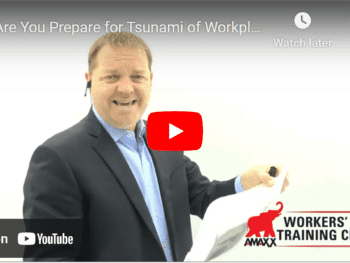
Dykoff: An All Too Common Scenario
The facts of Dykhoff v. Xcel Energy, 840 N.W.2d 821, 73 W.C.D. 865 (Minn. 2013), read like a law school hypothetical or test question meant to challenge students. The employee in this case was a middle-aged journeyman electrician, whose job duties included electronically monitoring power and transmission lines. Her work duties were performed at a desk, where she usually wore jeans and other casual clothes to work. Presumably, this did not include high heels.
On the date of injury, Ms. Dykhoff was instructed to attend a training session. Employees attending this event were advised to wear “dress clothes.” While attending the event, the employee wore two-inch high heels. She suffered a knee injury while walking on a dry floor. A post-injury investigation noted there was no debris on the floor.
Click Link to Access Free PDF Download
“The 5Cs to Taking a Bulletproof Injured Worker Recorded Statement”
The case was found not compensable after the initial hearing. These conclusions were reversed at the first level of appeal. Ultimately, the Minnesota Supreme Court upheld the hearing judge’s determination of non-compensability after a close evaluation of the facts and application of developing case law. Central to the Court’s conclusions were three common tests used in many workers’ compensation cases when the law and careful review of the facts drive issues of compensability:
- Increased Risk Test: The employee must show that she is exposed to a greater risk than the general public;
- The Positional Risk Test: The employee need only show that her employer placed her in the position where she was injured; and
- The Work-Connection Balancing Test: Where the arising out of/course of elements are evaluated.
In reversing the lower court decision, the Minnesota Supreme Court noted, “the employment creates a special hazard from which injury comes, then, within the meaning of the statute, there is that ‘causal relation’ between employment and the injury.”
Lessons Learned and Application
There is obviously no way an employer or other stakeholders can prevent a claim from being filed in instances like those described above. On the other hand, there are important take-aways anyone can implement to avoid adverse findings and increased workers’ compensation program costs:
- Maintaining a safe and properly functioning workplace environment is the surest way to prevent injuries. This includes making sure all walking surfaces are clear of debris and spills are immediately cleaned up in a proper manner. All employees within an organization should receive annual safety training and understand the importance of their role in the process.
- Setting proper expectations of employees when they attend meetings or other special functions during customary work hours or outside the normal workday. It is unclear what role the employee’s healed footwear played in the minds of judges when considering the Dykhoff. Notwithstanding its significance or lack thereof, it is something important to employers and other stakeholders to consider when holding workplace meetings where the posted attire exceeds those set during normal business hours. This includes footwear.
- A careful and complete investigation of all work injuries after they occur is important. Due to the interest in workplace “risk” by the Minnesota Supreme Court and other judicial bodies, it is important to note an uneven walking surface, a missing floor tile or floor mat can result in paying for someone’s medical bills and wage loss benefits under a workers’ compensation program.
Conclusions
Members of the claims management team and other interested stakeholders should take note of ways to keep their workers’ compensation costs in check. Part of this includes an analysis of employee expectations and an awareness to dangers that lurk around the corner. This includes an awareness to workplace safety and demands on employees.

Contact: mstack@reduceyourworkerscomp.com.
Workers’ Comp Roundup Blog: http://blog.reduceyourworkerscomp.com/
©2023 Amaxx LLC. All rights reserved under International Copyright Law.
Do not use this information without independent verification. All state laws vary. You should consult with your insurance broker, attorney, or qualified professional.













Beautiful post….I really like your post….